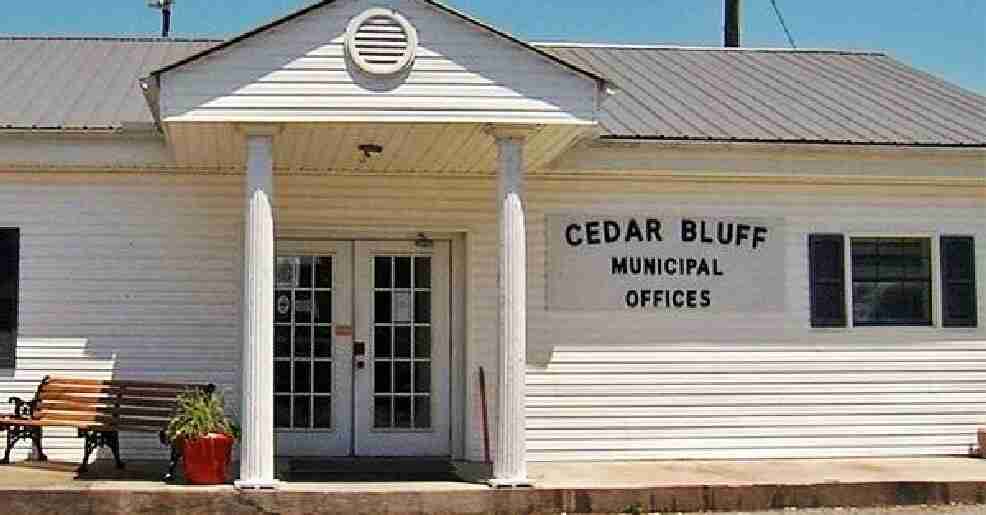 Samara Heisz/iStock(NEW YORK) — While many countries are pointing toward positive signs that social distancing might be finally flattening the curve, the novel coronavirus death toll continues to be staggering with more than 118,000 dead worldwide.
Samara Heisz/iStock(NEW YORK) — While many countries are pointing toward positive signs that social distancing might be finally flattening the curve, the novel coronavirus death toll continues to be staggering with more than 118,000 dead worldwide.
The U.S. is the global leader in the number of cases and deaths. At least 23,078 people in the U.S. have died as a result of COVID-19, the disease caused by the new respiratory virus, according to data compiled by the Center for Systems Science and Engineering at Johns Hopkins University.
More than 577,000 people in the U.S. have tested positive.
Worldwide, more than two million people have been diagnosed since the virus emerged in China in December.
The actual numbers are believed to be much higher due to testing shortages, many unreported cases and suspicions that some governments are hiding the scope of their nations’ outbreaks.
Here’s how the situation developed Monday. All times Eastern:
8:39 p.m.: Worldwide cases climb past two million
The coronavirus pandemic has reached a grim new milestone. According to the Center for Systems Science and Engineering at Johns Hopkins University, the number of worldwide cases has surpassed the two million mark.
The number of COVID-19 cases reached one million only 11 days ago, on April 2.
It took a week, between March 26 and April 2, for the number of worldwide cases to double from 500,000 to 1 million.
More than 118,000 have died from the virus worldwide.
7:09 p.m.: Mnuchin says small business loans are up to $230 billion
Treasury Secretary Steven Mnuchin said the Small Business Adminstration’s Paycheck Protection Program has so far distributed and confirmed $230 billion in loans for business in need.
Mnuchin provided the update at the White House Coronavirus Task Force briefing.
The treasury secretary said if loans haven’t been processed yet, they will get processed this week, and confirmed that he’s gone back to Congress to ask for more money.
He said that 80 million Americans will receive up to $1,200 in stimulus money in their direct deposit by Wednesday.
“We started processing those last Friday,” he said.
5:47 p.m.: Three more NYPD fatalities bring death toll to 9/11 level
The New York Police Department announced three more of its members died due to coronavirus complications.
Det. Jeffrey Scalf, a 14-year veteran who was assigned to the Gang Squad in the Bronx, and Det. Raymond Abear, an 18-year veteran who was assigned to the Special Victims Squad in Queens, both died on Monday. Auxiliary Police Capt. Mohamed Rahaman, who was with the force for 31 years and served out of Queens, died on Sunday.
The total number of NYPD members who have died from COVID-19 so far is now 23, the same number of members who were killed in the 9/11 terror attacks.
The department said 2,334 uniformed members and 503 civilian members have tested positive for the coronavirus — but since March 24, more than 800 uniformed members and 90 civilian members have returned to full duty after testing positive.
Around 17% of the force was out sick Monday, which is a decrease from the nearly 19% that were out sick last week, according to the NYPD.
5:45 p.m.: Massachusetts deaths grow to 844
Massachusetts health officials said 88 new coronavirus-related fatalities occurred in the last 24 hours, bringing the statewide total number of COVID-19 deaths to 844.
During that period, there were 1,392 new confirmed cases of the virus, bringing the statewide total to 26,867, according to health officials.
4:35 p.m.: 29% of Los Angeles County deaths are from nursing facilities
In Los Angeles County, 29% of deaths — 92 out of 320 — are from nursing homes or nursing facilities, public health officials said Monday.
In New York state, just over 10% of deaths — 1,064 out of a total 10,056 — are classified as nursing home fatalities, according to new data released by the state’s Department of Health.
The New York county with the highest nursing home death toll is Queens, which has recorded 193.
The elderly are among the most vulnerable to the dangerous virus.
3:48 p.m.: West Coast states working together on reopening economies
The governors of Washington, Oregon and California are working together “on a shared approach for reopening our economies,” Washington Gov. Jay Inslee announced Monday.
Each state will have its own specific plan, but the governors have agreed to work toward these four goals: protecting the vulnerable, like those in nursing homes; requiring adequate hospital surge capacity and personal protective equipment (PPE) supply; sharing best practices for testing, tracking and isolating systems; and “mitigating the non-direct COVID-19 health impacts, particularly on disadvantaged communities.”
3:10 p.m.: 21 NYC school teachers dead
A food service staffer, a guidance counselor and 21 public school teachers are among the 50 Department of Education employees in New York City who have died due to the coronavirus, the department said on Monday.
“The pain their loved ones are experiencing is unimaginable,” New York City Schools Chancellor Richard Carranza said. “We will be there to support our students and staff in any way they need, including remote crisis and grief counseling each day.”
The Department of Education added that “school buildings are not a place of greater exposure than any other part of our city. At this time, everyone should assume they have been exposed, because exposure can happen anywhere.”
2:50 p.m.: COVID-19 deaths now in all 50 states
Wyoming Gov. Mark Gordon announced the state’s first death on Monday.
There has now been a coronavirus death in all 50 states.
2:20 p.m.: New York working with 5 neighboring states on reopening plan
Six Northeast states — New York New Jersey, Connecticut, Pennsylvania, Delaware and Rhode Island — are joining forces to create a reopening plan, New York Gov. Andrew Cuomo announced Monday.
“Each state is going to name a public health official for that state, an economic development official for that state,” Cuomo said. “Those officials will then form a working group that will start work immediately on designing a reopening plan, taking into consideration the public health concerns and issues and the economic reactivation issues.”
“State boundaries mean very little to this virus,” Cuomo said
Questions remain over whether COVID-19 recovery will guarantee immunity: Is reinfection still possible?
“We anticipate different facts, different circumstances for different states, different parts of states,” Cuomo said. “Let’s be smart and let’s be cooperative and learn from one another.”
Delaware Gov. John Carney added, “Our states are connected in a real way in terms of transportation and visitation and the rest. So our working together, sharing our information and intelligence I think will help each of us make better decisions.”
Connecticut Gov. Ned Lamont noted the “hundreds of thousands of people going back and forth between New York and Connecticut. It’s the commuter corridor for us and it’s also the COVID corridor, which is why it’s so important we work together thoughtfully on this.”
The plan must “show us that we do have a future,” added Pennsylvania Gov. Tom Wolf. “As we figure out how we’re gonna reopen our schools, how we reopen our businesses and our homes, we are also going to recognize that we’re trying to figure out how we’re going to restore the sense of hope that this pandemic has taken away.”
1 p.m.: Police shut down underground nightclub in San Francisco
San Francisco police shut down an underground nightclub this weekend where people were gathering in violation of the stay-at-home order.
When officers went inside the industrial building on Saturday, they found DJ equipment, two fog machines, nine gambling machines, bins of liquor, cases of beer and bar furniture, police said.
Video from the weekend of April 5 showed more than 150 people going into the building in the middle of the night, and none of them were following the “6 feet apart” rules.
“The operators of this illegal club senselessly put lives at risk in a time when our city is doing everything within our means to slow the spread of this pandemic and safeguard the health and wellbeing of the public,” said San Francisco Police Chief William Scott. “Let this case be a reminder that we will take action against those who knowingly violate the public health order and endanger the health and safety of our residents.”
Because COVID-19 spreads fast and is 10 times deadlier than the 2009 flu pandemic, the World Health Organization (WHO) says the easing of restrictions must happen slowly.
“You can’t replace lockdown with nothing. You must replace lockdown with a very deeply educated, committed, empowered and engaged community,” Dr. Mike Ryan, executive director of the WHO’s Health Emergencies Program, said Monday.
“We are going to have to change our behaviors for the foreseeable future,” Ryan warned.
On Tuesday, the WHO will publish its updated strategic advice, which will include six criteria authorities will need to consider in order to lift restrictive measures: transmission is controlled; health system capacities are in place to detect, test, isolate, treat every case and trace every contact; outbreak risks are minimized in places like health facilities and nursing homes; preventive measures are in place in offices and schools; importation risks can be managed; and communities are fully educated and empowered to adjust to the new normal.
11:45 a.m.: New York state death toll climbs over 10,000
In New York state, which has suffered the most fatalities from the coronavirus pandemic in the U.S., the curve is continuing to flatten and appears to be plateauing, Gov. Cuomo said Monday.
The state saw 671 deaths on Easter Sunday, bringing New York state’s death toll to 10,056, Cuomo said.
Despite the rising death toll, in hard-hit New York City, Mayor Bill de Blasio appeared optimistic on Monday, praising New Yorkers for practicing social distancing as he announced new coronavirus numbers.
The number of new hospital admissions fell to 383 on Saturday, down from 463 on Friday.
There were 835 people in intensive care units Saturday, down from 857 patients one day earlier.
Citywide, the percentage of people tested who were found to be positive fell from 59.3% to 58.1%.
“This is a very good day,” de Blasio said.
De Blasio noted there is about a 48-hour lag in getting full, accurate information.
Cuomo on Monday addressed the reopening of the state, warning that it won’t be by the “flick of a switch.”
“I believe the worst is over if we continue to be smart,” the governor said.
When the state reaches that point, Cuomo said they will start by easing isolation, then increasing the economic activity, and then recalibrating the essential worker economy. That will be followed by applying more testing and precautions, said Cuomo.
10:35 a.m.: Supreme Court to teleconference oral arguments in May
The U.S. Supreme Court will for the first time hear oral arguments by teleconference in May, seeking to resolve a number of urgent cases that include President Donald Trump’s appeal of subpoenas seeking his financial records.
The announcement means the justices will hand down several major decisions on politically-charged issues in time for the November presidential election.
The justices are expected to make a ruling as to whether or not Trump must surrender his records to congressional and state investigators; whether states can require delegates to the Electoral College to cast ballots based on the popular vote; and whether the Obamacare contraceptive mandate is constitutional.
10 a.m.: Death toll over 11,000 in UK
In the United Kingdom, the coronavirus death toll has climbed to at least 11,329.
The U.K. has the fifth highest death toll, behind the U.S., Italy, Spain and France.
Over 88,000 people in the U.K. have tested positive, including Prime Minister Boris Johnson, who was released from the hospital on Sunday.
“It is hard to find the words to express my debt to the NHS [National Health Service] for saving my life,” Johnson, 55, tweeted Sunday. “The efforts of millions of people across this country to stay home are worth it. Together we will overcome this challenge, as we have overcome so many challenges in the past.”
9:15 a.m.: Sailor on USS Theodore Roosevelt dies
A sailor from the USS Theodore Roosevelt died from coronavirus complications on Monday, four days after he was admitted to an intensive care unit in Guam, the Navy said.
The sailor, whose name has not been released, tested positive for COVID-19 on March 30. The sailor was taken off the ship and put at an isolation house at the naval base in Guam where he received medical checks twice a day, the Navy said.
8:58 a.m.: Airline travel reaches another new low
On Sunday, 90,510 travelers came through TSA checkpoints nationwide. Exactly one year earlier, 2,446,801 passengers were screened.
7:02 a.m.: Spain reports a 2.09% rate of increase in newly diagnosed COVID-19 cases
Spanish authorities reported on Monday that there were only 3,477 newly diagnosed cases of the coronavirus, a 2.09% rate of increase.
The total number of confirmed cases is now at 3,477, the Spanish Health Ministry said.
Business around the country that cannot operate remotely are allowed to reopen their doors to the public on Monday.
All nonessential businesses will remain closed through April 26.
4:55 a.m.: Moscow introduces digital passes to move around the city
The Moscow government introduced a special page on their website to apply for a QR code to move around the city. The website became unavailable for some users on Monday morning, Meduza reported. Officials said the website was down due to a botnet attack, which was coming ‘also from abroad’. The pass will be obligatory starting from Wednesday.
3:48 a.m.: President Trump retweets call to fire Dr. Anthony Fauci
President Trump retweeted a Twitter posting that demanded Dr. Anthony Fauci, the director of the National Institute of Allergy and Infectious Diseases since 1984, be fired from his post.
The tweet was in response to DeAnna Lorraine, a former candidate for Congress in California.
Said Lorraine: “Fauci is now saying that had Trump listened to the medical experts earlier he could’ve saved more lives. Fauci was telling people on February 29th that there was nothing to worry about and it posed no threat to the US public at large. Time to #FireFauci.”
Only hours earlier, Fauci had appeared on CNN saying that he thinks more lives could have been saved if mitigation efforts to stop the spread of the novel coronavirus had started earlier.
“I mean, obviously, you could logically say that if you had a process that was ongoing and you started mitigation earlier, you could have saved lives,” Fauci told CNN’s Jake Tapper on “State of the Union.” “Obviously, no one is going to deny that. But what goes into those decisions is complicated … But you’re right, I mean, obviously, if we had right from the very beginning shut everything down, it may have been a little bit different. But there was a lot of pushback about shutting things down back then.”
11:52 p.m.: Trump associate, referenced at briefings, dies of virus
A longtime friend of Trump, whom the president said entered the hospital “for a mild stay” but then slipped into a coma due to the coronavirus, has died, ABC News confirmed.
New York real estate mogul Stanley Chera died at a New York hospital where he was battling the virus, a source said.
Although the president never mentioned Chera by name during his briefings on the virus, he described Chera’s battle with COVID-19 as a sobering moment for him personally.
“I have some friends that are unbelievably sick,” Trump said at the White House coronavirus task force briefing on March 30. “We thought they were going in for a mild stay and, in one case, he’s unconscious, in a coma. And you say, ‘How did that happen?'”
At the next day’s briefing, a somber Trump called on Americans to be “prepared for the hard days that lie ahead” as health advisers announced new projections indicating between 100,000 and 200,000 Americans could die from the virus.
You “think of it as the flu, but it’s not the flu. It’s vicious,” Trump said. “When you send a friend to the hospital and you call up to find out how he is doing — it’s happened to me. Where he goes to the hospital, he says goodbye, he’s sort of a tough guy — a little older, a little heavier than he’d like to be, frankly — and you call up the next day, ‘How’s he doing?’ and, ‘Sir, he’s in a coma.’ This is not the flu.”
Asked at the next briefing whether his friend’s struggle represented a turning point in this thinking about the virus, Trump said, “Yeah, well, not a turning point, no. Before that, I knew how — because I’m seeing numbers and I’m seeing statistics that are, you know, not exactly very good.”
“But — but it hit him very hard,” Trump continued. “He’s strong — a very strong kind of a guy. But he’s older. He’s heavier. And he’s sort of central casting for what we’re talking about, and it hit him very hard. I’ve never seen anything like it.”
Copyright © 2020, ABC Audio. All rights reserved.




